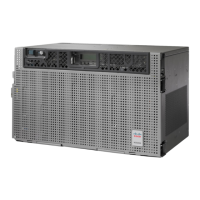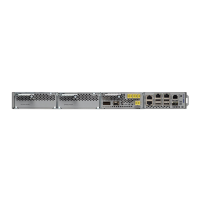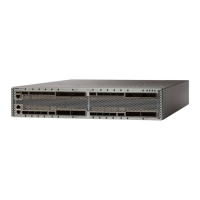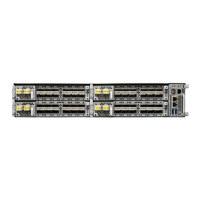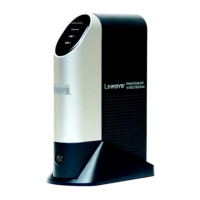f) If the alarm is correctly reported, move to Step 2, on page 88. If not, close the CTC application, delete the CTC
cache, and open the CTC connection again.
If the alarm inconsistency persists, log into the Technical Support Website at
http://www.cisco.com/cisco/web/support/index.html for more information or call Cisco TAC (1 800
553-2447) in order to report a service-affecting problem.
Note
Step 2
Step 3 Verify that the power value coming in on the ADD_RX port is correct.a)
• In card view, click the Provisioning > Optical Chn: Optical Connector X > Parameters tabs.
X is number (1 to 45) of the proper multifiber MPO connector that manages the alarmed channel
(wavelength).
Note
• The Power field value must be the same as that in the VOA Power Ref field. If not, take the appropriate
corrective actions according to the alarm raised at the RX-ADD port.
Step 4 Verify the correct behavior of the TXP, MXP, or line card that is the signal source of the channel (wavelength) that is
alarmed:
a) The TX laser must be active (trunk port is in IS [Unlocked] state).
b) The wavelength provisioned must be the proper one.
c) The output power value must be within the expected range (refer to the . If the trunk port PM is not available through
CTC (for example, TXP_MR_2.5G), perform a manual measurement using a standard power meter.
Step 5 If the cards referenced in Step 3, on page 88 and Step 4, on page 88 are operating properly, go to Step 6, on page 88.
If not, take the appropriate corrective actions according to the alarm raised on the card.
Step 6 If the alarmed card is a 32MUX-O or 40MUX, go to Step 9, on page 89.
Step 7 If the alarmed card is a 32WSS or 40MUX, continue with the following steps:
a) Double-click the card.
b) Click the Provisioning > Optical Chn: Optical Connector X > Parameters tabs.
X is number (1 to 45) of the proper multifiber MPO connector that manages the alarmed channel
(wavelength).
Note
c) Identify the correct row based in the Type field (the row must indicate Passthrough in the type field).
d) Decrease the attenuation on the VOA to the minimum (0 dB) to enable channel startup. To perform this in field
adjustment:
• Read the VOA Attenuation Ref value for the channel (wavelength).
• Enter the same value into the VOA Attenuation Calib field as that of the VOA Attenuation Ref field, but with
the opposite sign (the algebraic sum of the two contributions must be equal to zero).
• Click Apply. If the LOS-P alarm persists, continue with this procedure. Otherwise, the problem has been
corrected.
e) Click Circuits.
f) Delete the OCHNC circuit for the faulty channel.
g) Ensure that the service state of the corresponding ADD-RX port changes to IS-AINS (or
Unlocked,automaticInService) and that the color changes to grey (LOS-P alarm should clear).
h) Recreate the OCHNC circuit and verify that Circuit Status field reports DISCOVERED and the state is IS (Unlocked).
Cisco NCS 2000 series Troubleshooting Guide, Release 11.0
88
General Troubleshooting
Condition B1 - LOS-P Alarm
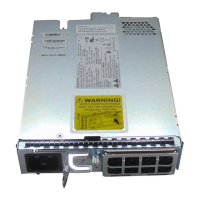
